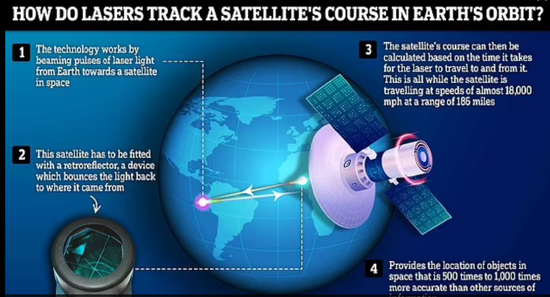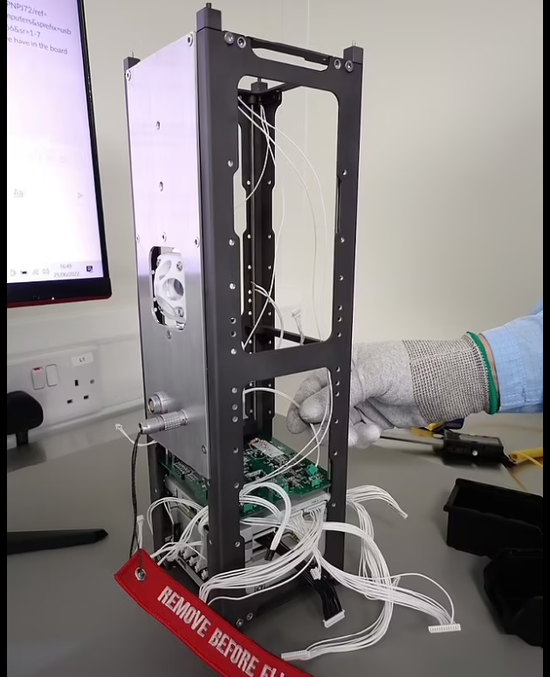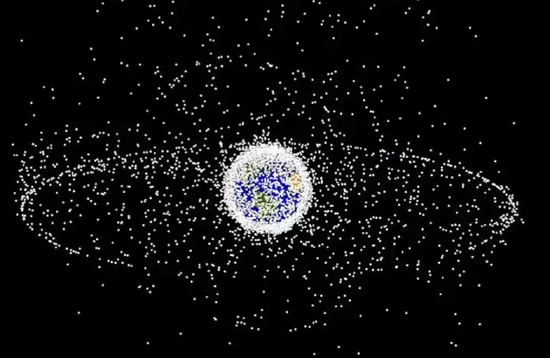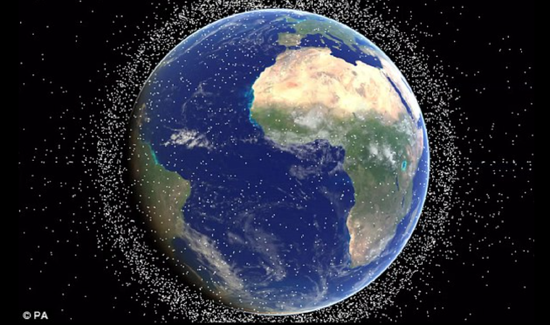Britain willUse the latest laser technology to track the position of satellites orbiting the Earth, and prevent them from colliding. According to the plan,The first test satellite will launch from Cornwall Spaceport later this summer.
▲ The United Kingdom will launch a test satellite later this summer to test technology that uses lasers to track the movement of satellites in Earth’s orbit
Developed by British startup Lumi Space, the laser tracking system works byShoot laser pulses from Earth to space objects and calculate how long it takes for the light to reflect. According to the company’s pitch, it’s a “simple and powerful method of tracking satellites with lasers,” with the goal of delivering precise collision warnings in response to possible threats from space debris.

▲ The system, developed by British startup Lumi Space, works by firing laser pulses from Earth to objects in space and calculating the time it takes for the light to reflect back
A small test satellite carrying the new technology will be launched in September, along with several other satellites, from Virgin Orbit, the small satellite launch company owned by the Virgin Group, possibly on British soil. The first rocket launch carried out is of historic significance.
It is estimated thatAbout 330 million pieces of space debris are currently in Earth orbit, including 36,500 objects larger than 10 centimeters, including abandoned satellites and rocket bodies, and even tools discarded by astronauts. Space debris can remain in Earth orbit for hundreds of years, posing a potential threat to the rapidly growing number of new satellites each year. As technology develops, more and more satellites are providing us with a variety of important services, including communications and climate change monitoring.
Built in Wales by space tech start-up Space Forge, the test satellite is fitted with retroreflector equipment developed by Lumi Space, which bounces light back into place. Based on the time it takes for the laser to travel to and from the satellite, its route can be calculated.

▲ The system will be equipped with Space Forge’s test satellite (pictured), which will monitor the process of reflecting its light back to the ground
The difficulty with this technique is thatThe laser beam must be aimed from the earth with an accuracy of 2 arcseconds. Meanwhile, the satellite is flying at nearly 29,000 kilometers per hour. Of course, such technology is not new. During the Apollo missions, NASA installed retroreflectors on the moon to precisely measure the distances of near-moon satellites from Earth.
However, Lumi Space’s new system is expected to be hundreds of times more accurate than current methods and will be the first to be offered to a private space company. The system would carry Space Forge’s satellites, or “platforms,” into space, where the light reflected back through the upper atmosphere would be received by the ground. Sheila Verdi of Lumi Space said: “This gives us information about the location of objects in space that is 500 to 1,000 times more accurate than other sources of information. It can be called the gold standard of space situational awareness.”
“With the large number of missions planned for the next decade, sustainable management of low-Earth orbit is imperative, and knowing exactly where objects are in space is a key part of that,” Verdi added. Develop new technologies to provide satellite operators with high-precision positioning information to fill gaps in the market.”
Lumi Space hopes to reduce the false positive rate of satellite collision warnings to less than 5 percent. Andrew Bacon, co-founder and CTO of Space Forge, said: “To ensure our Forge Star platform can accurately return to Earth and gain microgravity on demand, we need those innovative technologies that are being developed at Lumi Space. Tracking a A small satellite moving at nearly 8 kilometers per second would be an impressive feat, and we can’t wait to use this data to improve our understanding of how it flies in the upper atmosphere.”
Space Forge’s ultimate goal is to build factories in space to produce materials that can’t be produced on Earth. “The UK is a leader in the sustainable use of space, so it’s fantastic to see two innovative UK companies working together to bring satellite tracking technology into Space Forge’s core business.” UK The space agency’s Ian Annett said: “We are at a historic moment where the launch of the first satellite from British soil will spark a new wave of innovation.”
What is space junk?
It is estimated thatThere are about 170 million pieces of “space junk” left by human space missions, as big as an abandoned rocket stage and as small as paint chips. orbiting the earth with this junk,is about $700 billion worth of various space infrastructure.

▲ Space debris can remain in Earth orbit for hundreds of years, posing a potential threat to the rapidly increasing number of new satellites each year
However,We can only track 27,000 pieces of space debris so farand these debris can fly at speeds in excess of 27,000 km/h, and even the smallest pieces can seriously damage or even destroy satellites.
So, what do we do with this space junk? Traditional gripping methods don’t work in space because suction cups don’t work well in a vacuum, and the temperature in space is too low for things like tape and glue. Magnet-based grippers don’t work either, since most space debris in Earth orbit isn’t magnetic.

▲ Currently, about 500,000 pieces of man-made space debris surround our planet, including abandoned satellites, spacecraft debris and rocket debris.
Most of the solutions proposed so far, including “space harpoons,” either require strong external forces or result in strong interactions that could push the debris in unexpected and unpredictable directions.
Experts point out that the threat of space debris is particularly acute in the low-Earth orbit used by the vast majority of Earth observation satellites, geodesic satellites and space stations, and in geostationary orbits where communications, meteorological and monitoring satellites are located.
How many objects are in Earth’s orbit?
Number of rocket launches since 1957: 6,200;
Number of satellites in orbit: 13100;
Number of satellites still in space: 8410;
Number of satellites still in operation: 5800;
Number of fragmented objects: 31500 pieces;
Decomposition, explosion and other events: 630 times;
Mass of objects in orbit: 9900 tons.
Using statistical models to predict the amount of debris in orbit
More than 10 cm: 36500;
1 to 10 cm: 1 million;
1 mm to 1 cm: 130 million.
.
[related_posts_by_tax taxonomies=”post_tag”]
The post UK plans to use lasers to track satellite positions and prevent them from colliding: Launching first test satellite this summer appeared first on Gamingsym.
